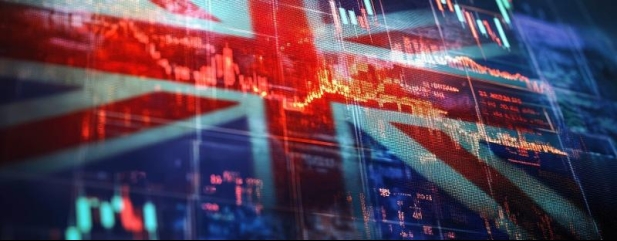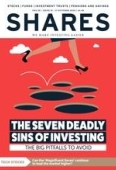Archived article
Please note that tax, investment, pension and ISA rules can change and the information and any views contained in this article may now be inaccurate.
The UK market’s buyback boom shows no signs of letting up

As tobacco firm Imperial Brands (IMB) announced its latest share buyback, there was an extraordinary, albeit logical, observation from broker Panmure Liberum.
Analyst Rae Maile noted that, if it continued at its current pace, the company stood a good chance of buying back all of its shares within a decade.
‘Since October 2022, the company has bought back 106 million shares at an average price of £19.20, with the annualised dividend saving more than £160 million per annum and rising,’ Maile explained.
‘Repurchases to date have retired 11.2% of the opening share count, or put another way, in two years Imperial has bought more shares than are owned by all but one of its institutional shareholders.
‘As we have said before, share repurchases are not only excellent financial sense at a PE (price to earnings) ratio of seven times but also the right stock market strategy when so many traditional shareholders have been beset by outflows.’
BUYBACKS EXPLAINED
There are two main ways a company can return cash to shareholders, either through dividends (regular or one-off) or buybacks. Typically, once a firm has purchased its own shares, they are cancelled, reducing the number of shares in issue. The advantages of buybacks versus dividends are they can be more tax-efficient for shareholders, assuming they would prefer to pay tax on a capital gain than the income from dividends; by reducing the amount of shares in issue, the remaining shares are eligible for a higher dividend in the future (assuming one is paid); and they imply the management team of a company, rightly or wrongly, believes the shares are undervalued.
The company unveiled its latest £1.25 billion buyback programme (to complete no later than 29 October 2025) alongside its trading update on 8 October, and there has been a clear trend for UK companies to buy back an increasing amount of their own shares in recent times.
In June this year, Morgan Stanley observed that 50% of companies in the 77-strong MSCI UK index had bought back shares in the previous 12 months. Members of the FTSE 100 returned £58.2 billion to their shareholders through buybacks in 2022 and £52.6 billion in 2023 and are on track for another bumper year this year with £49.9 billion worth of buybacks already declared by the end of the third quarter.
Ian Lance, co-manager of income-focused investment trust Temple Bar (TMPL), observed earlier this year that buybacks, along with M&A, were one of the key catalysts to unlocking the value on offer from UK stocks.
Lance identifies four key reasons why a company would buy back shares rather than pay a dividend:
- Dividends are sticky as companies are loath to cut them, whereas buybacks are not;
- Dividends return cash to all shareholders, buybacks only to those who choose to sell;
- Dividends and buybacks may have different tax consequences since they are treated as income and capital gains, respectively;
- Buybacks affect the share count, dividends do not.
The latter point, as Lance observes, means the amount of earnings attributable to each individual shares goes up. He also notes the cheap cost of debt had been a driver of buybacks over the decade leading up to 2021 when rates started to go up.
Lance adds: ‘The idea that executives could buy back shares only when they are trading below intrinsic value is fine in theory but more complicated in practice, as it relies on first, CEOs knowing how much their business is worth, and second, on them being able to control their emotions.
‘We continue to believe most UK companies are doing the right thing by buying back their own undervalued stock using excess cashflow, but share buybacks must be judged as part of a hierarchy of capital allocation and therefore cannot always be assumed to be positive.’
IAN LANCE’S GOOD, BAD AND UGLY OF SHARE BUYBACKS
THE GOOD
- A buyback which is part of a sensible capital allocation hierarchy
- Financed from free cash flow rather than debt
- Buying back stock which is demonstrably very undervalued
THE BAD
- Buying back expensive stock
- Buying back stock while at the same time issuing stock to employees
THE UGLY
- Using debt to buy back expensive stock when the company is already financially vulnerable
Important information:
These articles are provided by Shares magazine which is published by AJ Bell Media, a part of AJ Bell. Shares is not written by AJ Bell.
Shares is provided for your general information and use and is not a personal recommendation to invest. It is not intended to be relied upon by you in making or not making any investment decisions. The investments referred to in these articles will not be suitable for all investors. If in doubt please seek appropriate independent financial advice.
Investors acting on the information in these articles do so at their own risk and AJ Bell Media and its staff do not accept liability for losses suffered by investors as a result of their investment decisions.
 magazine
magazine








